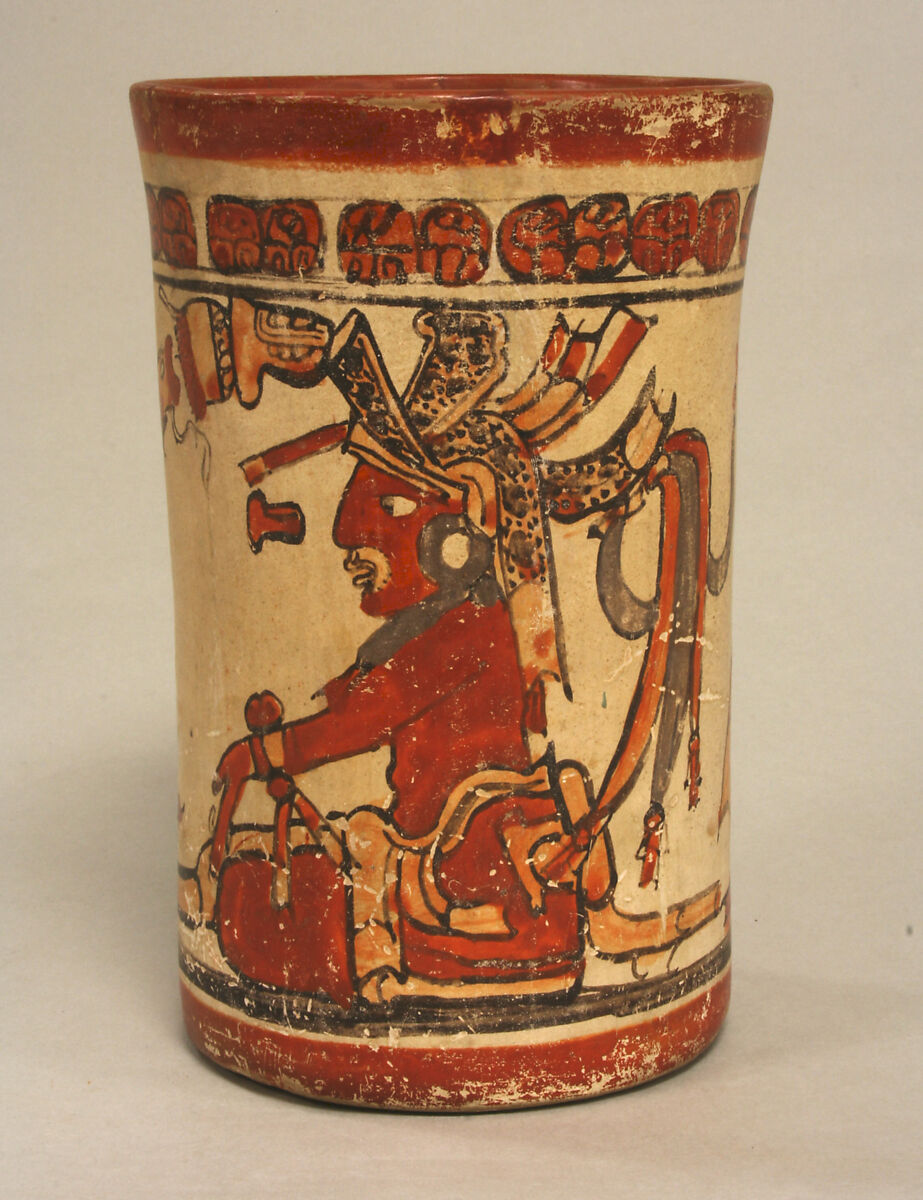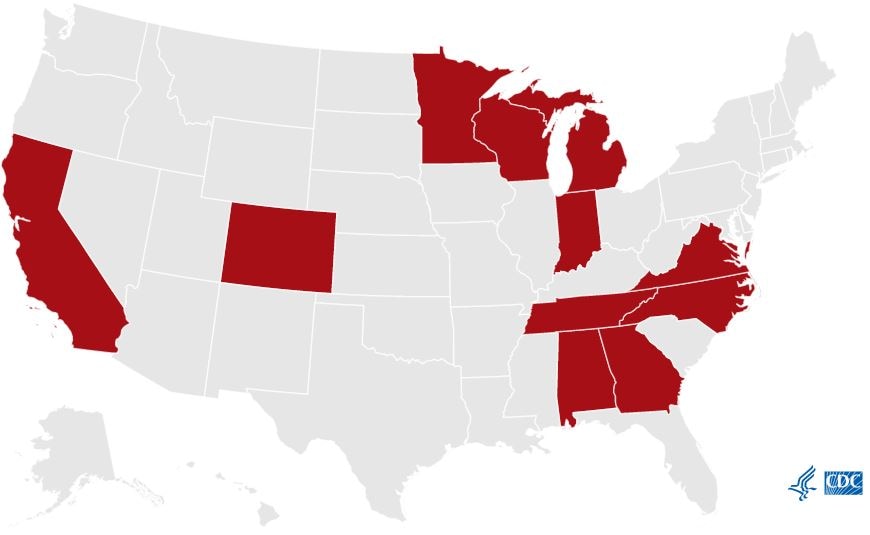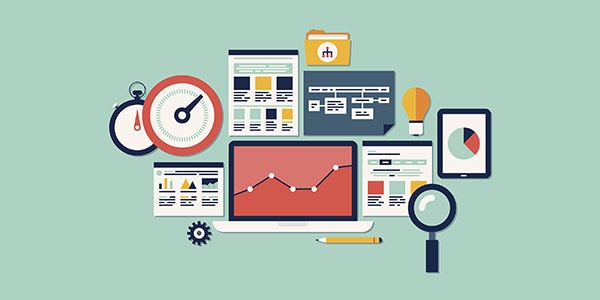It's these people who don't understand science and can't solve basic math problems. I've been on some YouTube channels where I have witnessed this.
Check this one, it's time stamped at 2:40:00. This one doesn't understand that 100 pound feathers and 100 pound peanuts is the same weight.
He claimed San Franco doesn't exist? Wow, that's insane. lol
Anyway, I did some research into Maya and Inca archeology.
Here are some great sources.
Latin American studies - Mayas.

Behind the Scenes: Mesoamerican Art - The Metropolitan Museum of Art
Former High School Intern Karina H. recounts her experience as an intern in the Department of the Arts of Africa, Oceania, and the Americas.www.metmuseum.org

The Chama Vase” from Guatemala, ca. 700 CE
This Maya polychrome ceramic ware from Chama, Guatemala was made around the 8th century CE. This pot is decorated with pictoral designs painted in several tints of red-orange and sepia on cream slip, red and black lines with typical Chama chevron band at top and bottom. Seven human figures in ceremony are accompanied by two to four glyphs.

Watercolor Roll-out of the Chama Vase by Mary Louise Baker

Penn Museum Blog | Maya Vase from Chama, Guatemala [Object of the Day #21]
<p>This Maya polychrome ceramic ware from Chama, Guatemala was made around the 8th century CE. This pot is decorated with pictoral designs painted in several tints of red-orange and sepia on cream slip, red and black lines with typical Chama chevron band at top and bottom. Seven human figures in...www.penn.museum
Objects On Display in Mexico and Central America Gallery - Digital Collections - Penn Museum
Listing of Objects On Display in Mexico and Central America Gallery.www.penn.museum

Cylindrical vessel with ball game scene, c. 682-701 C.E., Late Classic, Maya, ceramic, 20.48 cm high (Dallas Museum of Art)(zoomable image here)

Art of the Americas – Introduction to Art History I
In this chapter Mesoamerica (Olmec, Teotihuacan, Maya) Defining “Pre-Columbian” Mesoamerica Mesoamerica, an introduction Cultures of Mesoamerica: Olmec, Teotihuacan, Maya South America (Nasca, Paracas, Moche) Introduction…pressbooks.pub
"In Maya mythology, the Hero Twins appeared to have served many functions. Through time, and surely influenced by geography, they evolved the various aspects of their personas. They seem to have accumulated many roles as Maya civilization became more complex. In this paper, I will explore a succession of changes in behavior and role."
FAMSI - Foundation for the Advancement of Mesoamerican Studies, Inc.
FAMSI provides education resources, Mesoamerican bibliography, Kerr and Schele photographs, Schele and Montgomery Drawings and Hieroglyphic Dictionarywww.famsi.org

The Twins on K1254 (Figure 6) also wear the headband and the G3 "cruller". One sits facing the toad, who acts as messenger, probably bringing a message from the Lords of The Otherworld to the Twins to come and play ball with them.

The figures on another vase K7821 (Figure 7) help to corroborate this identification. In the first panel the Twin kneels before Itzamna; in the second panel, the Twin kneels before Itzamna’s avatar, Itzam Ye. The text indicates this composite character at glyph D1, and the names of the Twins appear at glyphs D2 and C3. Both kneeling figures have the same olla-like mouth, as well as headbands, upswept hairdos, and yokes.

There is precedence for this kind of depiction in Maya vase painting. The dancer on a vase from the Ik site K1452 (Figure 16), is shown in three separate aspects of his ceremonial bloodletting, twirling dance. These are not three separate individuals, but a sequential presentation of three actions of the ceremony performed by the same person.

A number of vessels have depictions of Jaguar-in-flames and Man-in-flames, obviously substituting for each other. On K3831 he wears his headband and appears in flames; on K3924 (Figure 17), it is the Jaguar-in-flames and Mok Chi’ as beekeeper, who appear together. On K5112, (Figure 18), it is Mok Chi’ marked with kimi glyphs and his head totally severed who appears in conjunction with the headbanded Man-in-flames. (The companion to Mok Chi’ on vase K2284 is also the Waterlily Jaguar.) (Figure 12).

ARC2AZT Essay: Life, Death and Chocolate in Mesoamerica: The Aztecs and the Maya; Where did the Ritual Use of Cacao Originate?
Ritual use of cacao permeates the Maya, the Aztec, and other cultures of Mesoamerica. Cacao, an indigenous plant, originally appeared in the Soconusco region of Mexico, with archaeological evidence of its use stretching over millennia. Next to maize,www.academia.edu

Title: Vessel, Palace Scene
Date: 7th–8th century
Geography: Mexico, Mesoamerica, Yucatan
Culture: Maya
Medium: Ceramic
Dimensions: Height: 6 5/8in. (16.8cm)
Diameter: 4 5/16in. (11cm)
Classification: Ceramics-Containers
Credit Line: The Michael C. Rockefeller Memorial Collection, Purchase, Nelson A. Rockefeller Gift, 1967
Accession Number: 1978.412.202

Vessel, Palace Scene - Maya - The Metropolitan Museum of Art
www.metmuseum.org

Cylindrical vessel with sacrificial scene, c.600-850 AD (ceramic and pigments).
_-_(MeisterDrucke-926797).jpg)
Cilindrisch vat met offer scène, c.600-850 AD (keramiek en pigmenten)
Cilindrisch vat met offer scène, c.600-850 AD (keramiek en pigmenten) | Mayan Mayan als een kunstafdruk.www.meisterdrucke.nl

The Madrid codex or codex tro cortesianus, deals with horoscope and astrological tables, reports in Spain by Hernan Cortes (1485-1547). Painted miniatures
MeisterDrucke - Kunstafdrukken, Schilderijen & Reproducties
Kunstafdrukken op canvas, verrijkt met hoogkwalitatieve sierlijsten. Kies uit ontelbare schilderijen van duizenden artiesten.www.meisterdrucke.nl

Mayan warrior. Polychrome ceramic, Mayan art, 7th. National Museum of Archaeology and Ethnology of Tikal (Guatemala).
MeisterDrucke - Kunstafdrukken, Schilderijen & Reproducties
Kunstafdrukken op canvas, verrijkt met hoogkwalitatieve sierlijsten. Kies uit ontelbare schilderijen van duizenden artiesten.www.meisterdrucke.nl

A ballgame scene painted on a cylindrical, ceramic vessel that dates to between A.D. 682 and 701. (Image credit: Courtesy of the Dallas Museum of Art)
Cylindrical vessel decorated with date glyphs and a Mayan ball player wearing black body paint and heavy padding for the competition, The great yoke protecting the ball players vital organs is clearly visible. Mexico. Maya. late Classic period, c 500 900. Campeche (probably).
Cylindrical vase from the tomb of Jasaw Chan K'awiil, Tikal, Guatemala. Detail. Mayan civilization, 8th century AD.
I was fascinated back when I learned that Mayan people are still around today. Its like if there were still ancient Egyptians around speaking their language.
The Mayans even look like the people in their ancient paintings

Kʼicheʼ language - Wikipedia

 Cap for a dap…
Cap for a dap…








